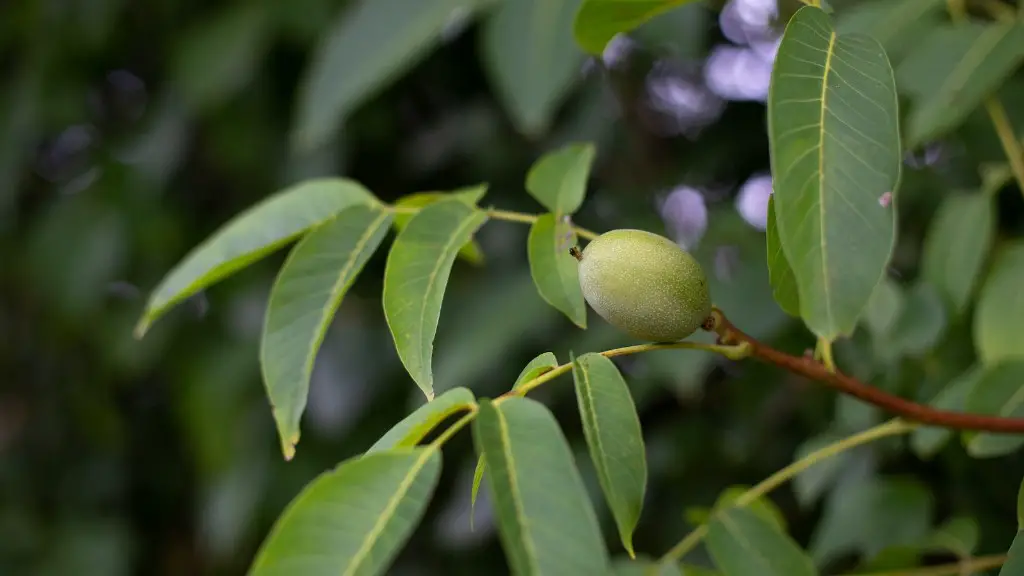The lemon tree is an incredible evergreen with the capacity to grow in a variety of conditions, climates and environments. It has been cultivated for centuries and continues to be one of the most commonly grown citrus plants. It is widely found throughout the Mediterranean region, the Middle East and North Africa, as well as in warm temperate regions such as California and other areas of the United States. The lemon tree is also found in many locations around the world.
The lemon tree is an evergreen, meaning it does not shed its leaves in the autumn or winter. Instead, the tree puts out new growth throughout the year. This allows the tree to bear fruit year round. In most warmer climates, the lemon tree grows abundantly in the wild. It does, however, require the occasional pruning or trimming to keep it healthy and productive. Aside from this occasional need for pruning, the lemon tree is quite low-maintenance and easy to care for.
The lemon tree prefers to grow in a full sun location with moist, well-drained soil. It also needs to be fertilized once a year with a nitrogen-rich fertilizer. The lemon tree is quite adaptable, growing well in climates that range from cool to hot.
The overall growth of the lemon tree is stunted if it does not receive adequate amounts of nitrogen-rich fertilizer, salinity from irrigation or rainfall, or under longer periods of high temperatures. As a result of these environmental requirements, the lemon tree is not able to thrive in areas with poor drainage, nutrient-deficient soils, or high amounts of salinity.
An important aspect of the lemon tree is its ability to increase overall yield when different varieties of the tree are planted together. Varieties of the lemon tree are distinguished by their differing flower color and size. Due to the variety of these trees, growers can introduce several different varieties onto one property. By doing this, the trees are exposed to multiple types of pollinators which can boost yields.
The lemon tree is a great addition to any garden or home growers’ property. This citrus plant can be quite the rewarding one, producing a high yield of delicious lemons. It is a hearty plant that is sure to last for many years. Not only does it produce delicious fruit, but it also has many ornamental benefits. It grows a full, green canopy and can offer a beautiful, ornamental tree or hedge in any garden.
Soil Requirements for the Lemon Tree
The lemon tree enjoys moist, well-draining soils and should not be planted in areas that experience standing water or flooding. Adding organic material to soils can improve drainage and increase the organic matter content. Organic matter helps the soil maintain nutrient availability and increases moisture retention. With that said, too much moisture in the soil can increase the chance of root rot and should be avoided.
The pH level of soil is also worth paying attention to when installing the lemon tree. Lemons prefer slightly acidic soils with a pH range of 6-6.5. A soil test can determine the pH levels of your soil and can help you understand what amendments may be necessary to help maintain healthy and productive lemon trees.
Once the soil requirements for the lemon tree are taken into account, the tree should not need much more than round the year fertilizer. Avoid over-fertilizing, as this can burn the plant. The lemon tree is an incredibly forgiving plant that can, in most cases, tolerate less than ideal soil conditions.
Proper Watering for the Lemon Tree
The lemon tree should receive consistent, even moisture during its growth season and irrigation should be increased during drier weather. The tree also favors fertilization as often as every 10-14 days with a nitrogen-rich fertilizer. During the hotter, drier months of summer, the tree should be watered with an inch of water at least once every week.
However, water the soil around the tree, avoiding wetting the tree’s foliage which can increase the chance of fungal and bacterial diseases. The lemon tree prefers a good amount of water, however, over-watering can lead to root rot. Regularly monitor the soil and make sure it is not becoming waterlogged.
The Pruning Process for the Lemon Tree
Pruning a lemon tree is important for maintaining optimal health and productivity. Pruning should be done to remove any dead or damaged wood, as well as to thin out the canopy to allow air to enter, which encourages the tree’s growth. Pruning should not be done until after the tree has finished bearing fruit.
When pruning, make sure to cut branches at a 45-degree angle, away from the main trunk. This ensures that there is no damage done to the trunk or limbs during the pruning process. Always sterilize your pruning shears or saws before use to reduce the chance of spreading disease.
Aside from pruning out dead or damaged wood and thinning the canopy, the lemon tree should not require much else in terms of maintenance. Pruning at least once a year is, however, essential in order to keep the tree healthy and productive.
Fertilizing the Lemon Tree
Fertilizing the lemon tree is a crucial step in improving the overall yield and health of the plant. The fertilizer should be rich in nitrogen and should be applied gradually throughout the growing season. The fertilizer should be applied to the soil, supplying nutrients to the roots of the tree.
It is important to note that too much nitrogen can cause the tree to produce fewer flowers, reducing the overall yield of lemons. An important aspect of lemon tree fertilizer is that it should contain the essential micronutrients such as iron, magnesium, zinc and copper. These essential micronutrients are necessary for the tree to grow and produce fruit.
Fertilizing the lemon tree should not be done too frequently, as mentioned previously. Once a year is usually sufficient in most instances. If the tree is not flourishing and producing high yields, then an additional application of nitrogen-rich fertilizer may be necessary. Additionally, it is recommended to apply fertilizer when the soil temperature is above 60 degrees Fahrenheit. This will aid in better absorption of the nutrients in the soil.
Pest Control for the Lemon Tree
Controlling pests is an important step when caring for a lemon tree. Unfortunately, there are many pests that can attack the tree, from insects such as aphids, whiteflies and mites, to larger pests such as rodents, birds and deer.
This is why it is recommended to use both chemical and physical pest control strategies. Chemical control strategies involve using insecticides and fungicides to target and eliminate common pests. These should be used sparingly and applied according to the instructions on the labels. Alternatively, physical pest control involves using barriers such as fencing to keep out larger pests such as deer, as well as lures and traps to capture rodents.
Insecticidal soaps and oils are a great way to tackle infestations of soft-bodied pests such as aphids and whiteflies. Be sure to spray all parts of the lemon tree, topping and undersides of the leaves included, when treating for pests. While chemical strategies should be used as a last resort, they can be effective when used responsibly.
Harvesting Lemons from the Tree
When it comes time to harvest the fruits from the tree, there are a few things to keep in mind. Lemon fruits are best for harvesting when they are still quite small, about the size of a small to medium lime. This is when the lemons have the most tart flavor, and the peak harvest season is usually between April and June.
To harvest the lemons, simply cut them off the tree, making sure to leave a small amount of stem attached. If the lemon needs to be picked higher up on the tree, a suitable pole or ladder should be used. The lemons can last a few weeks off the tree if stored properly in the refrigerator.
Conclusion
The lemon tree is an incredibly versatile and rewarding citrus tree. It is easy to care for and can produce a large yield of delicious lemons. It also has many ornamental benefits and can be used as a beautiful hedge or screen around a house or garden. The lemon tree enjoys moist, well-draining soils, should be fertilized with a nitrogen-rich fertilizer, and should be watered regularly. It should have an inch of water applied once a week during hotter, drier weather. Pruning the tree is also important to keep it healthy and productive.




